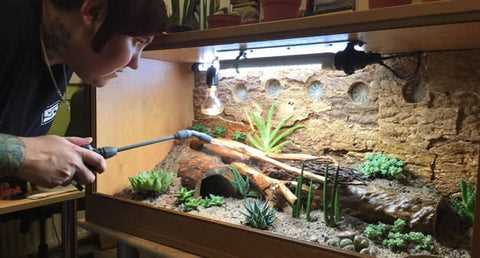
Creating a bioactive environment for leopard geckos involves using a substrate that mimics their natural habitat. This means opting for materials that are safe, non-toxic, and able to replicate the geckos’ natural dwelling. By choosing a bioactive substrate, you are providing your geckos with a more comfortable and enriching living space that closely resembles their native environment.
Creating a Bioactive Substrate for Leopard Geckos
A bioactive enclosure aims to replicate the gecko’s natural habitat as closely as possible. It provides numerous benefits for both the geckos and the keeper. This type of environment promotes natural behaviors, encourages physical activity, enhances mental stimulation, and supports proper digestion. Additionally, a bioactive substrate helps maintain humidity levels within the enclosure, which is essential for the gecko’s health.
Choosing the Right Substrates for Leopard Geckos
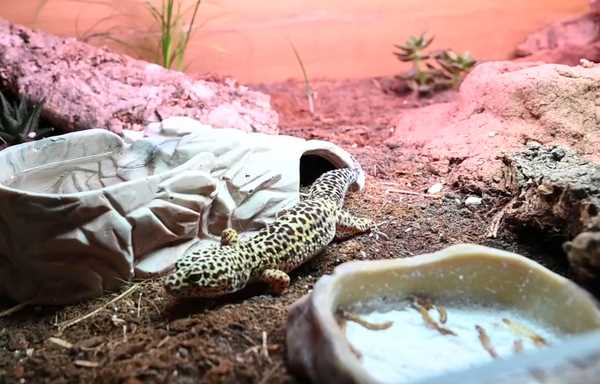
Benefits of Bioactive Substrates for Leopard Geckos
Step-by-Step Guide to Creating a Bioactive Substrate
- Mix organic topsoil, sand, and coconut coir in a ratio suitable for your gecko’s needs.
- Add pieces of natural decor, such as rocks, logs, and plants, to create hiding spots and climbing opportunities.
- Moisten the substrate mixture until it reaches the desired moisture level.
- Introduce beneficial microorganisms, such as isopods and springtails, into the substrate.
- Allow the substrate to settle and establish for a few days before introducing your gecko.
Maintaining and Caring for a Bioactive Substrate
Regular maintenance is essential in keeping the bioactive substrate clean and healthy. Spot clean any waste or uneaten food to prevent odor and contamination. Occasionally, you may need to replace a small portion of the substrate to ensure its quality. Maintaining proper humidity levels is crucial, so monitor the substrate’s moisture and mist as needed. Additionally, provide fresh water and a shallow dish for your gecko to drink from.
Troubleshooting Common Issues with Bioactive Substrates
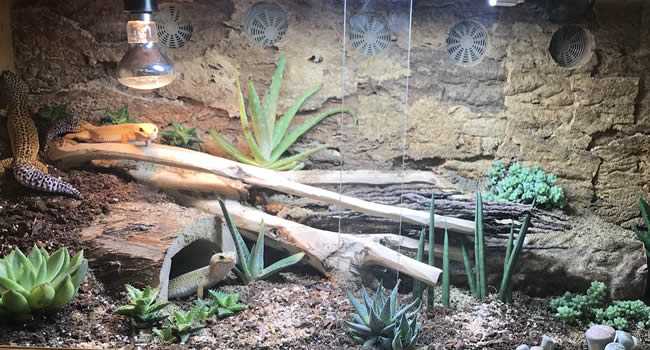
Leopard geckos are fascinating reptiles that require a suitable environment to thrive. Creating a natural habitat is essential for their overall well-being and longevity. In the wild, leopard geckos inhabit arid regions, such as rocky deserts and grasslands. By recreating their natural environment in captivity, we can provide them with the necessary conditions to lead a healthy and fulfilling life.
A bioactive substrate offers numerous benefits for leopard geckos. First and foremost, it allows them to exhibit natural behaviors, such as digging and burrowing. These activities are essential for their physical and mental stimulation. Additionally, a bioactive substrate can help maintain the proper humidity levels within the enclosure, which is crucial for the geckos’ health and shedding process.
Creating a natural environment for leopard geckos is not only beneficial for their well-being, but it also enhances the overall aesthetics of the enclosure. With a bioactive substrate, the habitat becomes visually appealing, resembling a slice of their natural habitat. It creates a more immersive and enriching experience for both the geckos and their keepers.
Choosing the Right Substrates for Leopard Geckos
There are several factors to consider when selecting substrates for leopard geckos. First and foremost, the substrate should be bioactive, meaning it contains living organisms such as beneficial bacteria, fungi, and microfauna. These organisms help break down waste, control odor, and create a healthy balance within the terrarium.
The substrate should also be able to maintain humidity levels within the terrarium. Leopard geckos require a moderately humid environment, and the substrate should retain moisture without becoming waterlogged. This helps prevent dehydration and aids in shedding, as geckos often use the substrate to rub off their old skin.
Another important factor to consider is the size and texture of the substrate. Leopard geckos have sensitive skin on their bellies and feet, so the substrate should be soft and non-abrasive to prevent injuries. Avoid using rough or sharp materials that could cause irritation or abrasions.
Some common substrates that work well for leopard geckos include coconut fiber, sphagnum moss, orchid bark, and a mixture of topsoil and sand. These substrates are natural and provide a soft, moisture-retaining foundation for the terrarium. They also promote the growth of beneficial organisms and mimic the gecko’s natural environment.
The Benefits of Bioactive Substrates for Leopard Geckos
Promotes Natural Behaviors
Leopard geckos are native to arid regions of Asia, and in the wild, they spend their time burrowing and exploring their surroundings. By providing a bioactive substrate that mimics their natural habitat, you are encouraging these natural behaviors. The geckos will have the opportunity to dig, hide, and explore, which can reduce stress and promote overall mental and physical stimulation.
Enhances Natural Feeding Habits
Bioactive substrates can also enhance the geckos’ natural feeding habits. In a natural environment, leopard geckos hunt for their food by patiently waiting for prey to come within reach. By incorporating live plants and beneficial microorganisms into the substrate, you create a micro-ecosystem that attracts small insects and other invertebrates. This allows the geckos to exhibit their natural hunting and feeding behaviors, which can lead to better digestion and overall health.
Provides Environmental Enrichment
A well-designed bioactive substrate provides environmental enrichment for leopard geckos. The diverse microorganisms, such as springtails and isopods, help break down waste materials and maintain a healthy terrarium ecosystem. This natural process also helps to control odor and prevents the growth of harmful bacteria. Additionally, the presence of live plants and natural decor provides hiding spots and climbing opportunities, which can help keep the geckos active and engaged.
Supports Natural Waste Management
Promotes Overall Health and Well-being
By creating a bioactive substrate that closely mimics a natural environment, you are promoting the overall health and well-being of your leopard geckos. The natural behaviors, enhanced feeding habits, environmental enrichment, and waste management provided by the bioactive substrate all contribute to improved physical and mental health. This can lead to happier and healthier geckos that thrive in their enclosure.
Step-by-Step Guide to Creating a Bioactive Substrate for Leopard Geckos
Creating a bioactive substrate for leopard geckos is an excellent way to provide a natural and enriching environment for these fascinating reptiles. By implementing a bioactive terrarium, you can mimic their natural habitat and promote their overall well-being.
Gather the Necessary Materials
Before getting started, gather all the materials needed to create the bioactive substrate. You will need:
- Organic topsoil
- Coconut fiber or sphagnum moss
- Clean play sand
- Leaf litter or hardwood mulch
- Live plants
- Springtails and isopods (clean-up crew)
Prepare the Enclosure
Clean and disinfect the leopard gecko’s enclosure before adding the substrate. This will ensure that no harmful bacteria or parasites are present.
Create the Base Layer
Add the Drainage Layer
On top of the organic topsoil, add a layer of clean play sand. This will act as a drainage layer and prevent the substrate from becoming too saturated with moisture.
Spread the Coco Fiber or Sphagnum Moss
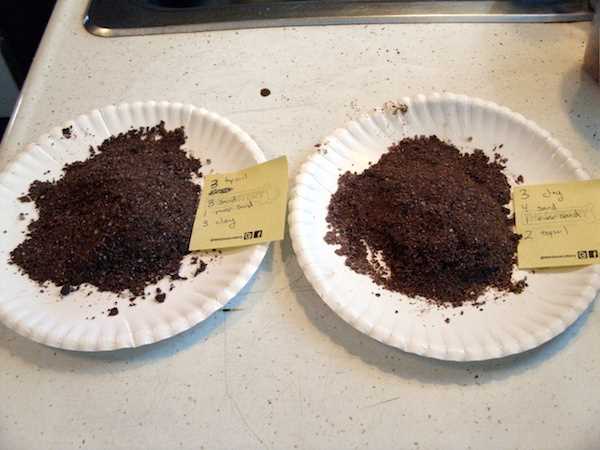
Spread a thin layer of coconut fiber or sphagnum moss over the sand layer. This will help retain moisture and create a more humid environment within the enclosure.
Add Leaf Litter and Hardwood Mulch
Scatter leaf litter and hardwood mulch over the coco fiber or sphagnum moss layer. This will provide hiding spots for the gecko and contribute to the natural look of the habitat.
Introduce Live Plants
Add live plants to the enclosure. Choose plants that are suitable for leopard geckos and can thrive in the terrarium environment. Live plants not only add aesthetic appeal but also help maintain the balance of the ecosystem by oxygenating the substrate and absorbing excess moisture.
Introduce the Clean-up Crew
Release springtails and isopods into the terrarium. These tiny creatures will help break down waste and dead plant material, keeping the substrate clean and healthy for the leopard gecko.
Maintain and Monitor the Bioactive Substrate
Regularly monitor the bioactive substrate’s moisture levels, temperature, and cleanliness. Adjust these variables as necessary to ensure a suitable environment for the leopard gecko.
Maintaining and Caring for a Bioactive Substrate
Once you have set up a bioactive substrate in your leopard gecko’s terrarium, it is essential to maintain and care for it properly to ensure a healthy and natural environment for your pet. Here are some important steps to follow:
| Step | Task |
|---|---|
| 1 | Monitor humidity levels |
| 2 | Check temperature gradients |
| 3 | Spot clean as needed |
| 4 | Provide appropriate lighting |
| 5 | Feeding and watering routine |
| 6 | Maintain beneficial microorganisms |
Temperature gradients are also vital for leopard geckos’ well-being. Ensure that the terrarium has a temperature gradient by using a thermostat and heat sources like heat mats or ceramic heat emitters. This way, your gecko can choose the temperature that suits them best at any given time.
Spot cleaning the terrarium regularly is necessary to remove any waste or uneaten food. This will help prevent the growth of harmful bacteria and maintain a clean and hygienic environment for your gecko. You can use a scoop or tweezers to remove waste and uneaten food as required.
Proper lighting is crucial for leopard geckos’ health and wellbeing. They need a light source that provides UVB radiation to aid in their calcium metabolism. Use a reptile-specific UVB bulb and ensure the terrarium has a proper light cycle, including a day and night cycle, to mimic their natural habitat.
Feeding and watering routines should be established and followed consistently. Provide your leopard gecko with a balanced diet of live insects and appropriate supplements as directed by a veterinarian. Ensure fresh water is available at all times by using a shallow dish or water bowl that is easy to access.
Maintaining beneficial microorganisms in the bioactive substrate is important for its long-term success. These microorganisms break down waste and help maintain a healthy ecosystem. Avoid using any chemicals or pesticides that could harm the microorganisms. Instead, focus on regular maintenance and providing a suitable environment for them to thrive.
By following these steps and regularly monitoring the substrate and terrarium conditions, you can ensure the bioactive habitat for your leopard geckos remains healthy and provides a natural and enriching environment for them to live in.
Troubleshooting Common Issues with Bioactive Substrates
1. Mold and Fungus Growth
One of the common issues with bioactive substrates is the growth of mold and fungus. This can happen due to excessive moisture in the enclosure. To prevent mold and fungus growth, you can:
- Ensure proper ventilation in the terrarium
- Monitor the humidity levels and adjust if necessary
- Remove any wet or soiled substrate promptly
- Introduce more springtails and isopods to help control organic matter
2. Odor Issues
Another common issue is the buildup of odor in the enclosure. This can happen due to the decomposition of waste and food. To address odor issues, you can:
- Spot clean the enclosure regularly to remove any waste or spoiled food
- Ensure proper ventilation in the terrarium
- Introduce more bioactive cleaners, such as springtails and isopods, to help break down organic matter
3. Substrate Contamination
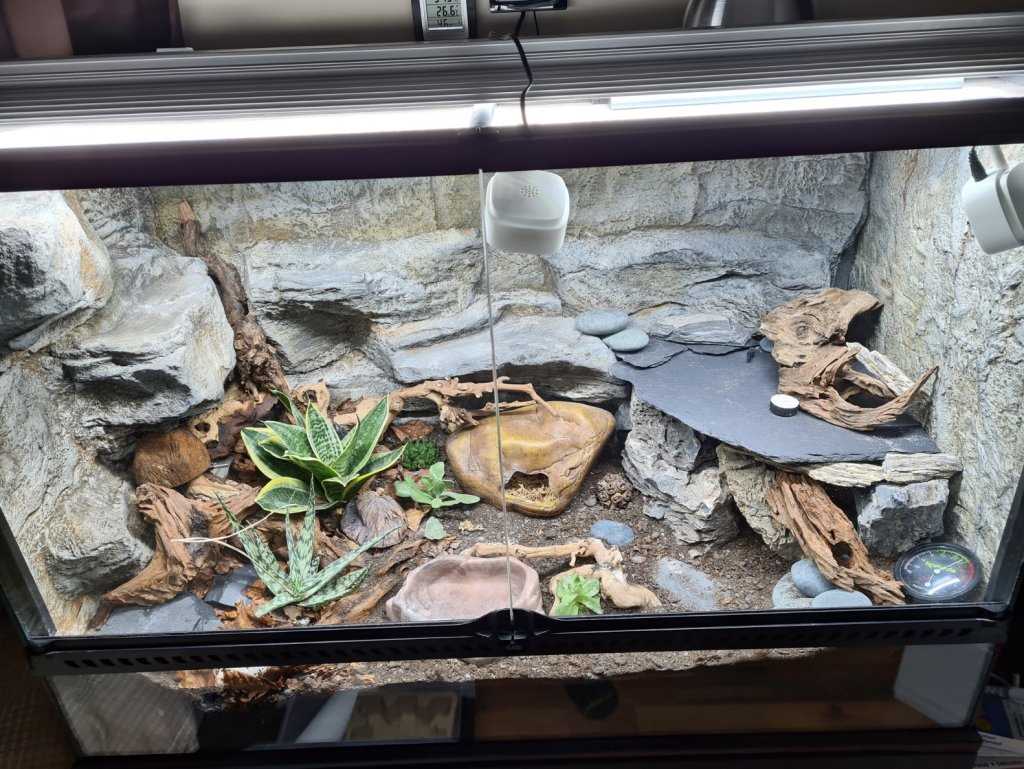
Sometimes, unwanted organisms or pests can hitchhike into the enclosure along with the substrate. To prevent substrate contamination, you can:
- Source your substrate from reputable suppliers
- Quarantine and treat new substrate before introducing it to the enclosure
- Regularly check the enclosure for any signs of pests or unwanted organisms
- Introduce predator insects, such as predatory mites, to control pests if necessary
4. Excessive Moisture
If the substrate becomes too moist, it can lead to issues such as scale rot or respiratory problems for your gecko. To prevent excessive moisture, you can:
- Monitor the humidity levels in the enclosure and adjust if necessary
- Use a hygrometer to accurately measure the humidity
- Ensure proper ventilation in the terrarium
- Spot clean any wet or soiled areas promptly
By addressing these common issues and troubleshooting them proactively, you can ensure a healthy and thriving environment for your leopard geckos. Remember to monitor the enclosure regularly and make any necessary adjustments to maintain the proper balance of a bioactive substrate.

I’m Lena Adams—a product of an unconventional upbringing in the African wilderness. My father, a daring explorer of African wildlife, sparked my fascination with reptiles, a passion that intertwined with the tragic loss of my mother during an expedition, leaving an indelible mark on my life. Driven to understand the creatures that captivated my parents, I embarked on my journey, sharing insights about reptiles, frogs, and lizards on my website. Through my explorations and conservation efforts, I honour my family’s legacy while seeking connections—to the creatures, nature, and the mother whose presence I yearn to understand.
